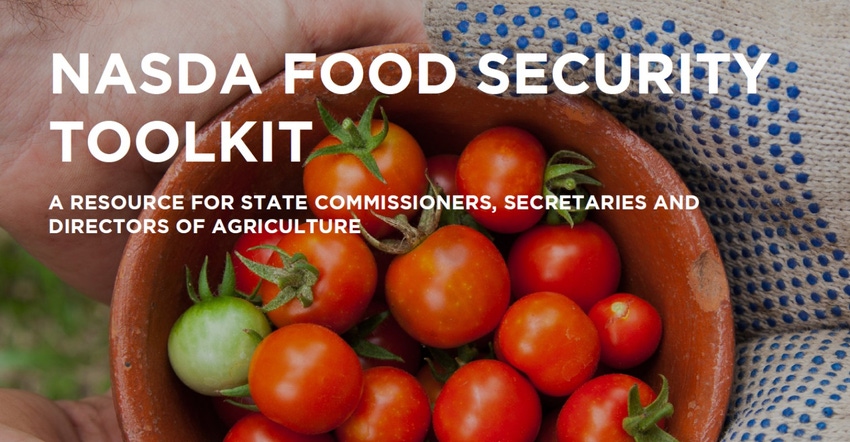State ag departments launch food security toolkit
NASDA toolkit encourages members to look at what other states are doing to reduce food insecurity.

When state departments of agriculture form partnerships with other entities, state residents become more food-secure and farmers, ranchers and food producers benefit from wider market access, according to a new toolkit released at the National Association of State Departments of Agriculture 2021 Winter Policy Conference.
Inspired by NASDA members’ unique ability to form partnerships across the food supply chain and influence food and agriculture policy, this project was led by NASDA President Dr. Ryan Quarles, who also serves as Kentucky’s commissioner of agriculture. The NASDA Food Security Toolkit analyzes state agriculture departments’ existing food security programs and partnerships and offers states resources needed to create programs that eliminate food insecurity in the United States.
While speaking at the NASDA conference, Quarles says nationwide before the pandemic 17% of Americans were considered food insecure. During the pandemic, food banks saw an estimated 30% increase in Americans utilizing their services as food insecurity issues compounded.
“The NASDA Food Security Toolkit highlights what our members are already doing to reduce hunger and offers examples for how we can learn from each other to ensure every American has access to fresh and nutritious food,” Quarles says. “It is unacceptable that one in nine Americans are considered to be food insecure. Sharing best practices will help us achieve a more food secure nation.”
Food security examples shared
The NASDA Food Security Toolkit provides examples of more than 20 successful programs state departments of agriculture have implemented through several forms of partnerships.
“NASDA members understand that no one group, state or organization can take on the issue of food insecurity alone and succeed. Pursuing partnerships extends our reach, reveals new perspectives, multiplies our impact and inspires others to engage and take action,” NASDA CEO Barb Glenn adds.
During her comments at the conference, Glenn shares that building effective and creative partnerships will help meet the prolonged demands.
“The toolkit is not only evidence NASDA members led, but also offers a roadmap for the future for new food and agricultural systems,” Glenn says to extend the reach and multiply the impact of effective public and private partnerships.
Examples of programs and partnerships in the toolkit include the Kentucky Department of Agriculture’s Kentucky Hunger Initiative, a first-of-its-kind effort in Kentucky to bring together farmers, charitable organizations, faith groups, community leaders, and government entities to begin a dialogue to help reduce hunger in Kentucky. The effort, which started as a task force in 2016, has since reformed the state’s food donor immunity law and raised hundreds of thousands of dollars for hunger relief.
In Tennessee, the Tennessee Department of Agriculture’s partnership with Cul2vate, a faith-based farm worker training and hunger relief program, produces and donates thousands of pounds of produce each year for food insecure people.
New Mexico Department of Agriculture’s SNAP-Ed Double Up Food Bucks program provides families and seniors with additional funds to purchase food from local farmers. This program benefits local economies while bringing fresh foods into homes.
About the Author(s)
You May Also Like


.png?width=300&auto=webp&quality=80&disable=upscale)


